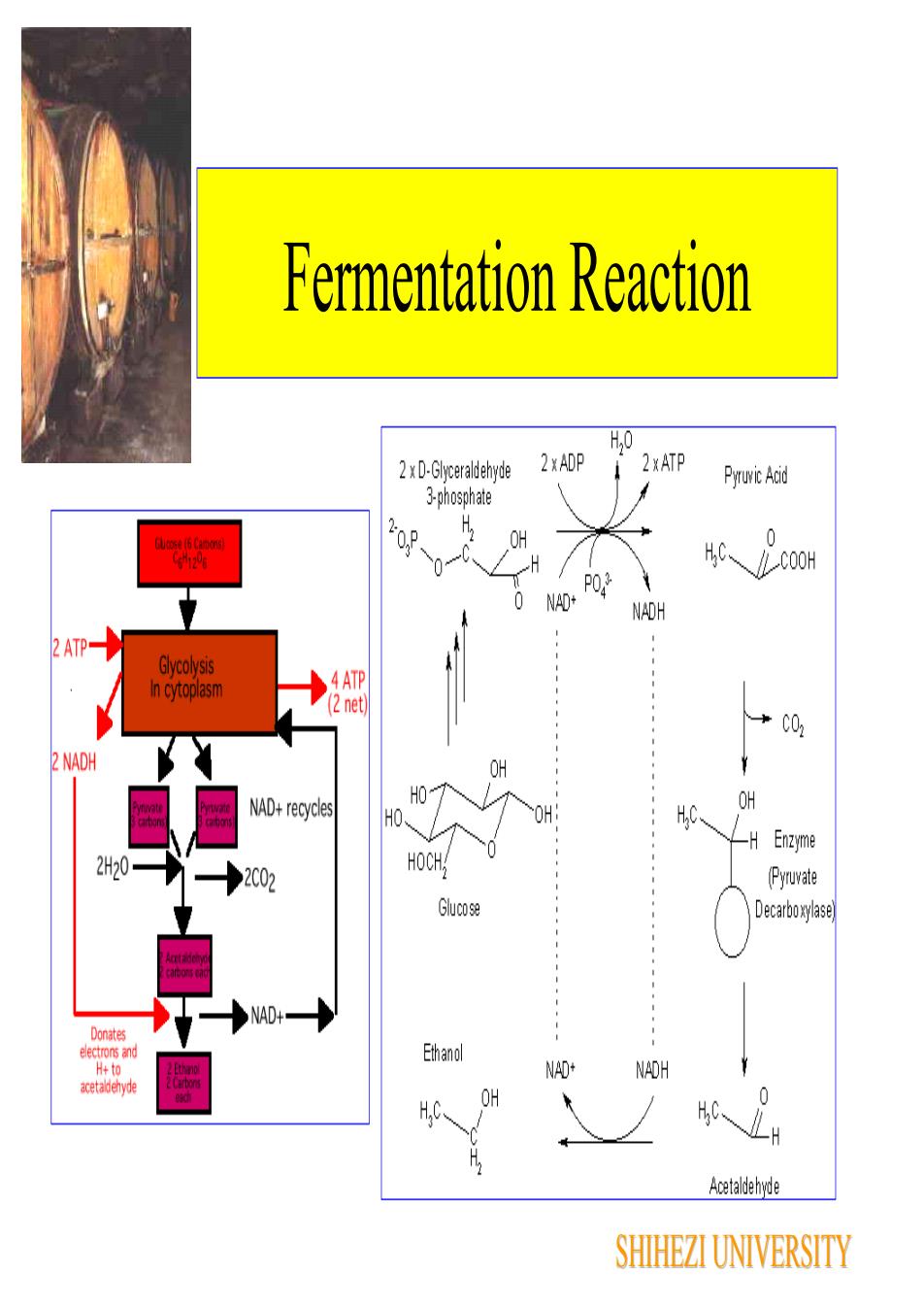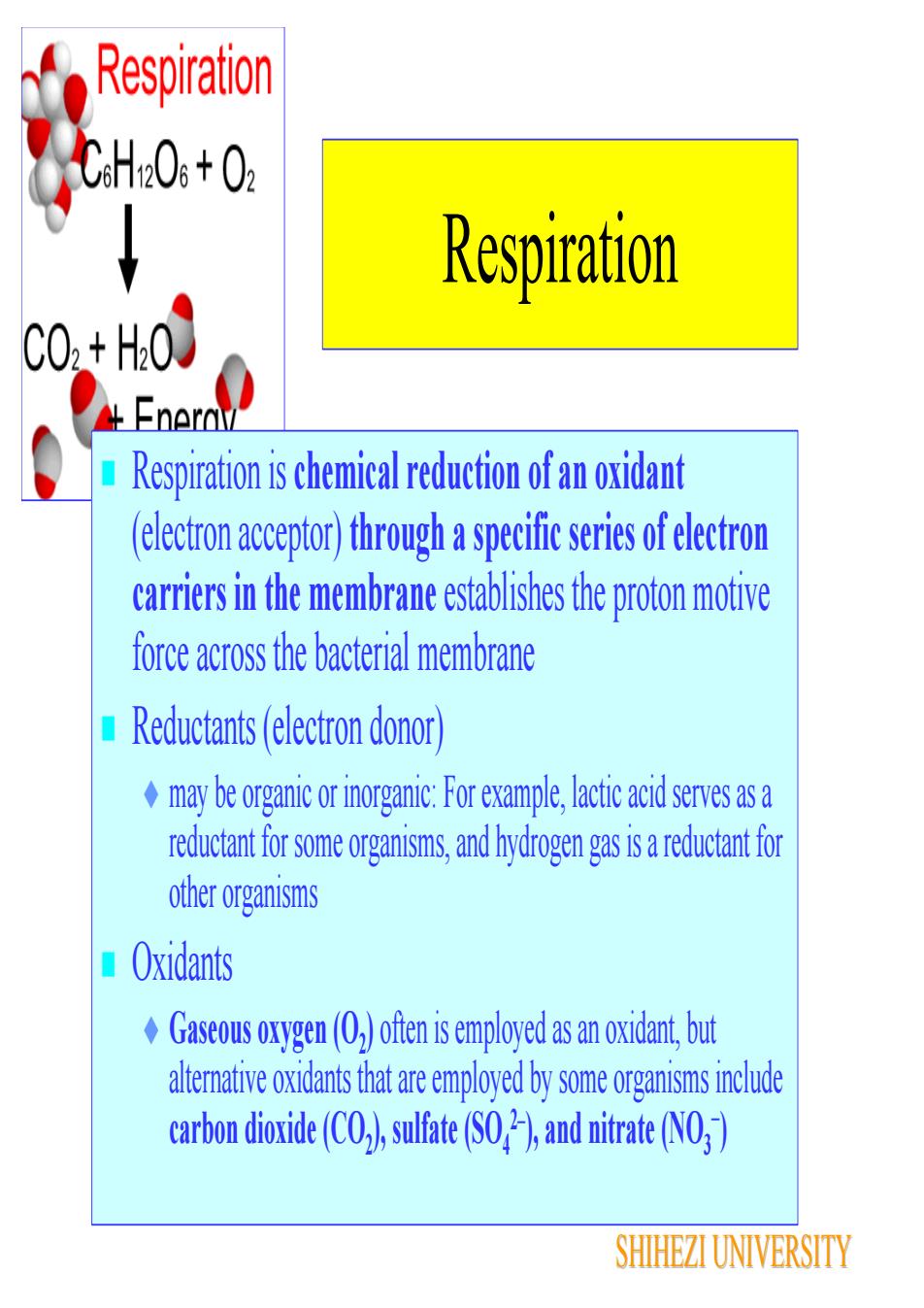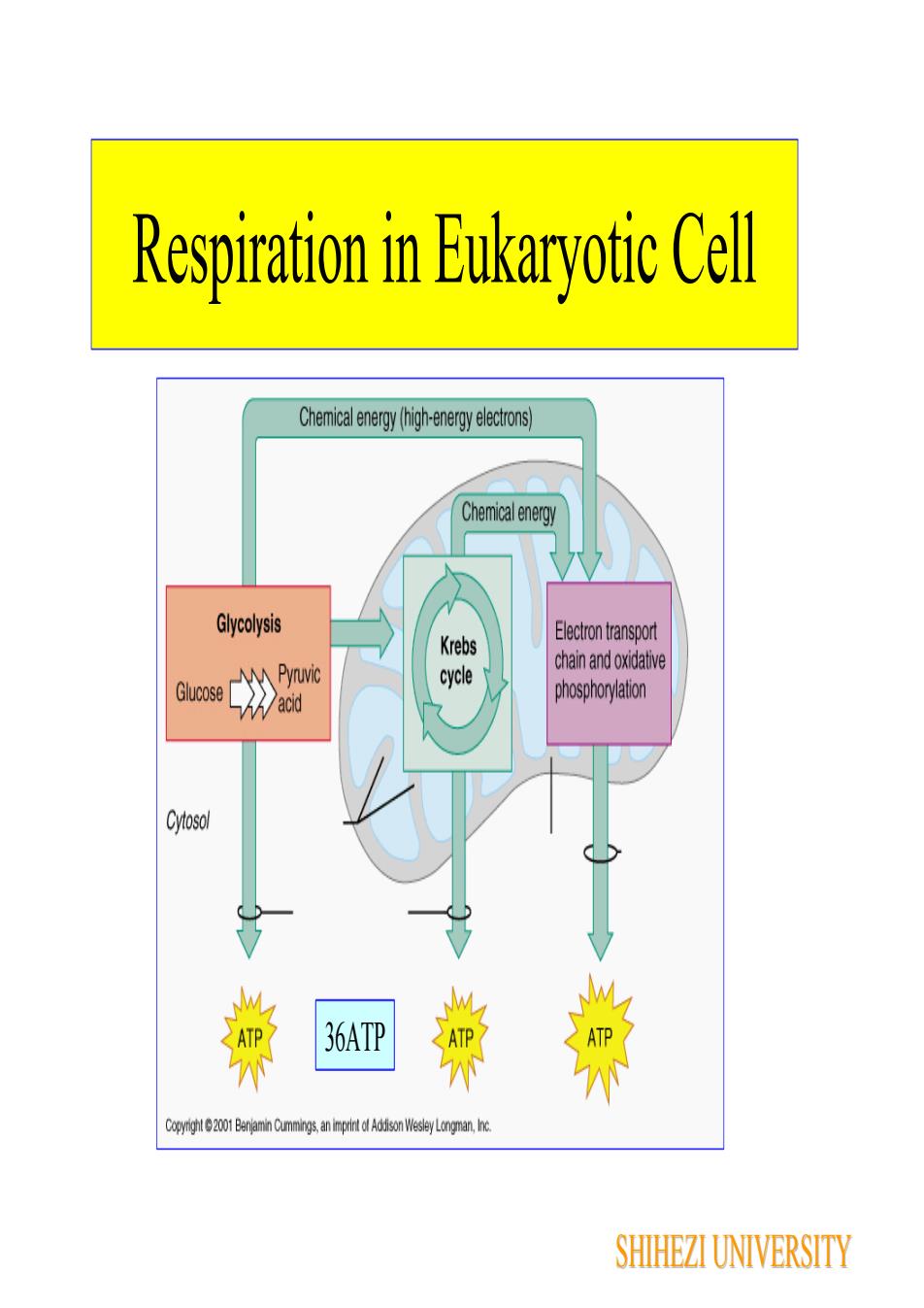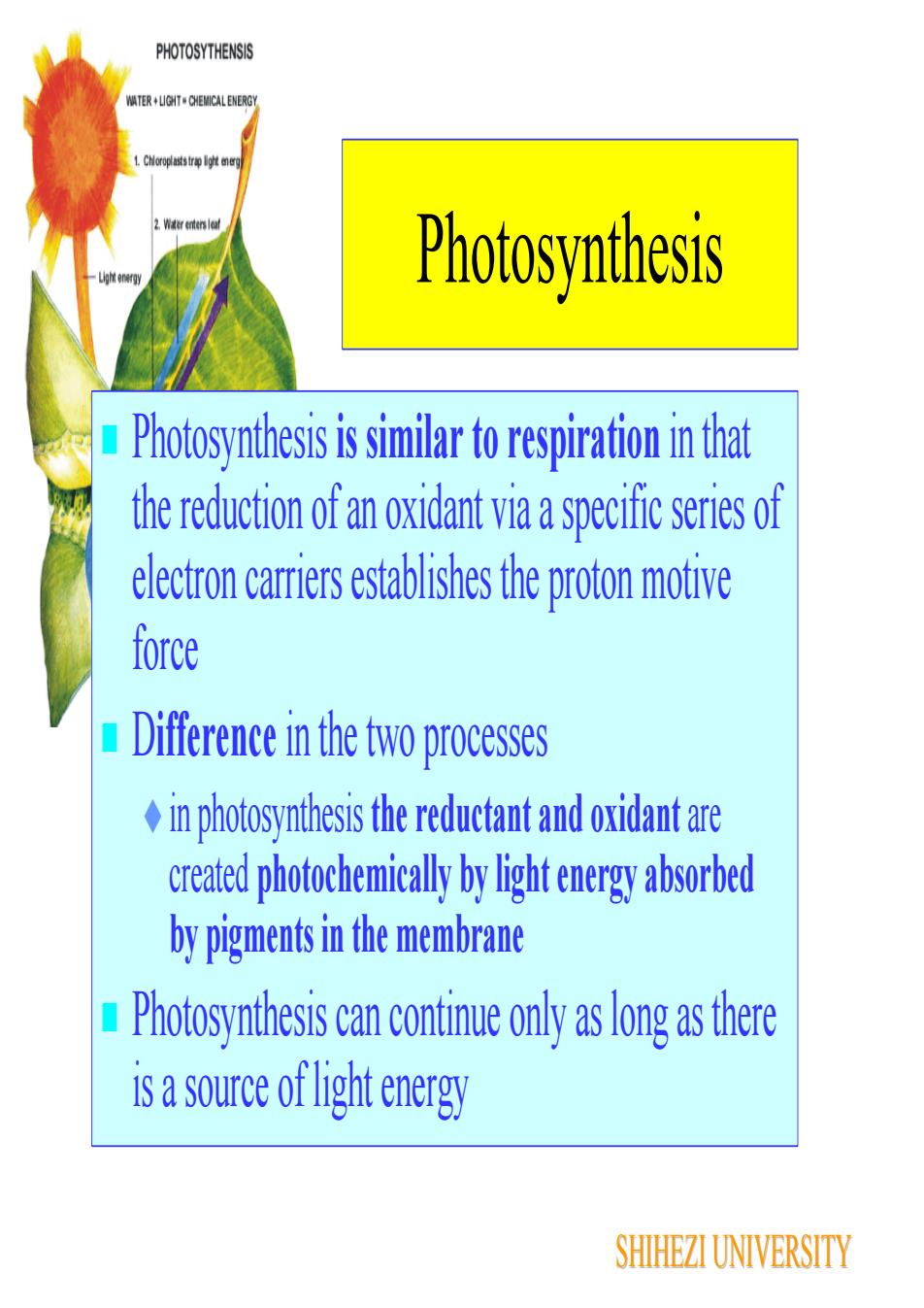
Fermentation ReactionH,02 xATP2 xADP2 × D-GlyceraldehydePyruvic Acid3-phosphateOHGuose (6 Camon)CGH12000FPO.30NAD+NADH2ATP-Glycolysis.4ATPIncytoplasm(2 net)+CO22NADHOHOHNAD+ recyclesmaOHH.C.HO中-HEnzymeHOCH,2H20(Pyruvate2C02Gluco seDecarboxylaseNAD+DonatesEthanolelectrons andNAD+NADHH+toELOIDCarborsacetaldehydeOHDedTAcetaldehydeSHIHEZI UNIVERSITY
Fermentation Reaction SHIHEZI UNIVERSITY

RespirationC.H20 + 02RespirationCO2 + H2OEneraRespiration is chemical reduction of an oxidantelectron acceptor) through a specific series of electroncarriers in the membrane establishes the proton motiveforce across the bacterial membraneReductants (electron donor)may be organic or inorganic: For example, lactic acid serves as areductant for some organisms, and hydrogen gas is a reductant forother organismsOxidants+ Gaseous oxygen (O,) often is employed as an oxidant butalternative oxidants that are employed by some organisms includecarbon dioxide (CO,), sulfate (SO 2), and nitrate (NO,SHIHEZIUNIVERSITY
Respiration Respiration is chemical reduction of an oxidant (electron acceptor) through a specific series of electron carriers in the membrane establishes the proton motive force across the bacterial membrane Reductants (electron donor) may be organic or inorganic: For example, lactic acid serves as a reductant for some organisms, and hydrogen gas is a reductant for other organisms Oxidants Gaseous oxygen (O2) often is employed as an oxidant, but alternative oxidants that are employed by some organisms include carbon dioxide (CO2), sulfate (SO4 2–), and nitrate (NO3 −) SHIHEZI UNIVERSITY

Respiration in Eukaryotic CellChemicalenergy(high-energyelectrons)ChemicalenergyGlycolysisElectron transportKrebschain and oxidativePyruviccycleGlucosephosphorylationacidVCytosol36ATPATEnmySHIHEZI UNIVERSITY
Respiration in Eukaryotic Cell 36ATP SHIHEZI UNIVERSITY

Respiration in Eukaryotic CellFigure J-12: Steps inAerobic RespirationElectronsElectrons carriedcarriedvia NADH andGlycolysisFADH,via NADH(cytoso)ELECTRONPyruvate OxidationGLYCOLYSISTRANSPORTKREBSCHAINANDCYCLEGlucosePyruvateOXIDATIVEPHOSPHORYLATIONKreb's CycleMitochondrionCytosolOxidativePhosphorylatlonLots of ATP producedATPATP(mitochondria)OxidativeSubstrate-levelSubstrate-levelA summary of the steps inphosphorylationphosphorylationphosphorylationaerobic respiraiton.SHIHEZI UNIVERSITY
Respiration in Eukaryotic Cell SHIHEZI UNIVERSITY

PHOTOSYTHENSISWATER+LIGHT-CHEMICALENERGY1.Chioroplaststrp Igt eneg2.WiterentersleafPhotosynthesisLight energyPhotosynthesis is similar to respiration in thatthe reduction of an oxidant via a specific series ofelectron carriers establishes the proton motiveforceDifference in the two processesin photosynthesis the reductant and oxidant arecreated photochemically by light energy absorbedby pigments in the membranePhotosynthesis can continue only as long as thereis a source of light energySHIHEZI UNIVERSITY
Photosynthesis Photosynthesis is similar to respiration in that the reduction of an oxidant via a specific series of electron carriers establishes the proton motive force Difference in the two processes in photosynthesis the reductant and oxidant are created photochemically by light energy absorbed by pigments in the membrane Photosynthesis can continue only as long as there is a source of light energy SHIHEZI UNIVERSITY